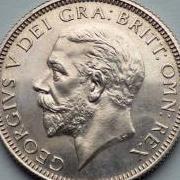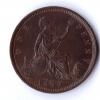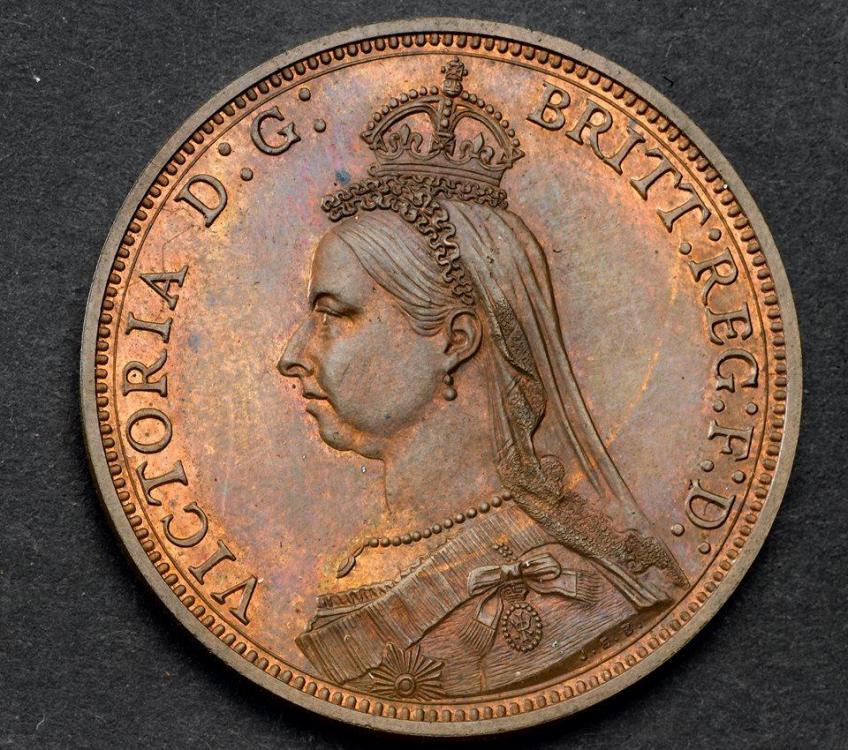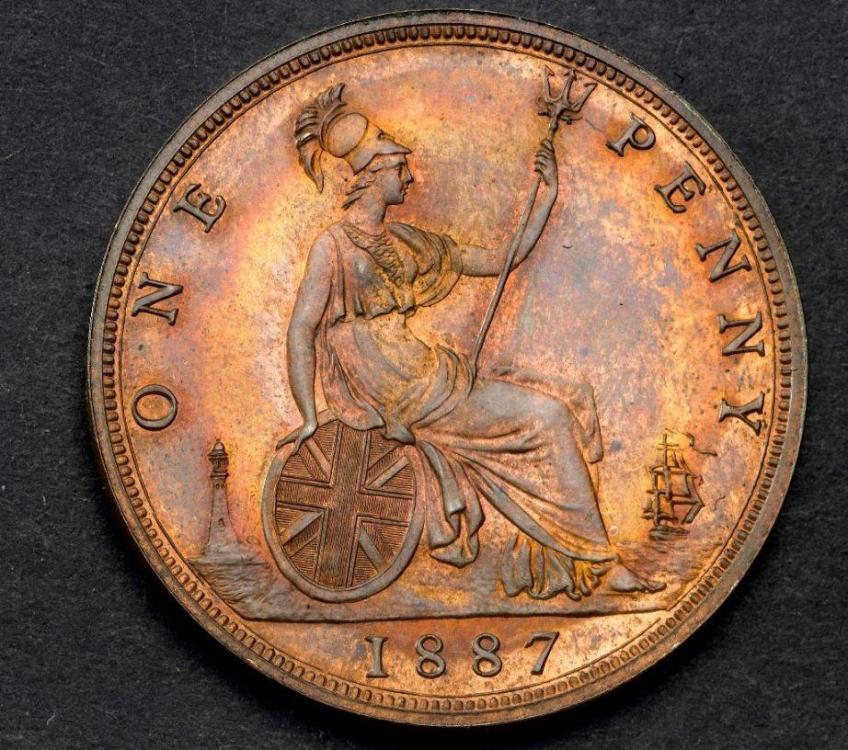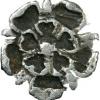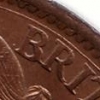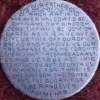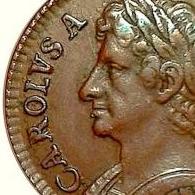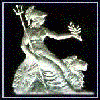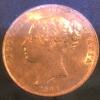Leaderboard
Popular Content
Showing content with the highest reputation on 08/30/2018 in all areas
-
3 points
-
3 points
-
I recently purchased a 1787 sixpence from Michael Gouby graded at aEF. I don't consider it to be the prettiest of pieces, but was attracted by an interesting detail: I'm sure it's very apparent to you that there is a funny curved line between the top and bottom of the first "I" in "III". I'm pretty confident that this is an overstrike of sorts. My theory is that the die maker started to strike "Dei" straight after "Georgius" in a momentary lapse of concentration. Immediately noticing his error he corrected it by filling in the curved section of the "D", leaving an "I". In the process of filling he missed a very small fraction running along the edge of the "D"s curve, which resulted in the small, thin raised line you see. I was encouraged to do some research and so over the course of a couple of days I looked at several hundred images of 1787 sixpences. Basically, I looked at every reference and image to the 1787 sixpence that Google brought up directly and then some. Out of these I found nine definite matches with the same issue. If the sample I looked at was representative of the entire issue, slightly more than 2% have this identifying feature. Not only was the I/D overstrike there, but each coin shared several other anomalies indicating they were all from the same die: Die pitting to the left of the hair ribbon, die pitting in the corner of the mouth, a mark underneath the eyebrow and the precise position of the legend lettering. The 2% figure is consistent with the number of dies produced for the minting of the 1787 shilling (see the Manville/Gaspar article) . Coincidentally, this die was used to produce a (presumably) very small number of coins on a heavy pure silver flan. Here's one of the two examples I came across: In one of these two examples it was described as a proof. I don't think this is the case. Although the edge is plain, there is no toothing around the edge as there are in the September proofs struck by Pingo. Moreover, there is bifurcation of the bottom of the lettering. This all indicates that the coin was struck without a collar (proofs were made with a collar) and the edge wasn't milled as you would expect with a circulation coin. An odd hybrid. I can't imagine that a die in poor condition like this would ever be used for a proof either: The pitting of the die; The D/I; The error on the "E" of "Dei" (which seems to have been corrected on the circulated sixpences produced from this die). There doesn't appear to have been any special preparation of the blank's surface either. There's no way that this is a proof. I'm only very new to numismatics, but here's my theory of the existence of a heavy flan struck with this die. The end of the order was approaching, but the mint was running short on workable dies. They dug out a die from the metaphorical bottom draw that had been put there because of the D/I and "E" errors, but it had accumulated some surface blemishes (small rust pits maybe). Wanting to test whether they could use it, a few test strikes were made using a thicker blank they had to hand so as to differentiate it for the circulation coins. No need to mill the edge as it wasn't meant to be used. Somehow is escaped being melted down again and escaped into the wild. Do you think my theory has any possibility of holding water? Anyway, I bought the first coin pictured from Michael for 55 GBP. I was tempted to bid on this sixpence currently listed for the upcoming DNW auction. It has an estimate of 200-300 GBP, which is out of my reach at the moment. Very happy to have the example I bought from Michael, though.2 points
-
2 points
-
Thanks Jerry I used the money from my guinea sale to buy this 1787 shilling, which I won at the Davissons auction that just ended: https://davcoin.com/lot/e-auction-26-lot-89 Looking forward to expanding my 1787 sixpences as well (in time), including run of the mill varieties.2 points
-
Well, for what it’s worth, your I/D exploration was great, as it is also great that you are learning so much, and so quickly. Re your Guinea...if you bought it from eBay without knowledge, I’d be happy that I’d even acquired a genuine gold article to be honest. Little consolation, I know, but you’re clearly getting there, and we’ve all done it. The very best of knowledge and successes to you, madness! 👍1 point
-
My first experience was buying a guinea graded by the eBay seller as good very fine. It was a piece of crap worth only its value in bullion. The research was part of an effort to ensure that I wasn't ripped off again. There are many trust worthy people here, but part of the learning process is learning to know who to trust. I appreciate all advice on this forum and thoroughly enjoy my interactions here. I've come to Pre-decimal to learn, which implies I trust you, which I do! Thanks everyone for all your help. 😊1 point
-
And the cynic in me wonders if he simply had an offer he felt he couldn’t refuse.........😬 Jerry1 point
-
1 point
-
1 point
-
on the The Royal Mint Museums Faceache page, here is the text to go with it The Jubilee coinage was introduced in the summer of 1887 but the change in designs extended only to gold and silver coins, the bronze coinage continuing to bear the same fondly regarded Bun Head effigy of Victoria. That there should be a Jubilee Head pattern penny of 1887 in the Mint collection is therefore of some interest. One explanation is that the Mint simply ran out of time. A firm deadline had been set for the issue of the new coins, in June 1887 and, given the enormous amount of work that attended the preparation of tools for all the gold and silver denominations, it is not surprising that the Mint had to abandon any thought of also including bronze1 point
-
1 point
-
In case anyone is interested, here are my sources of images for I/D 1787 sixpences, some of which are for sale: https://www.gbclassiccoins.co.uk/shop/sixpences/1787-george-iii-early-milled-silver-sixpence-no-hearts-near-ef-2/ https://www.ebay.com.au/itm/Great-Britain-1787-George-111-Sixpence-Without-Hearts-EF-gVF-/142907377281?nordt=true&orig_cvip=true&rt=nc&_trksid=p2047675.m43663.l10137 (sold on eBay apparently and so link redirects you. You have to click "see original item") https://www.ebay.co.uk/itm/1787-GEORGE-III-SILVER-SIXPENCE-WITH-HEARTS-GOOD-VERY-FINE-OR-BETTER-CONDITION/152522895551?hash=item238312b0bf:g:kMkAAOSwVm5Y~dBd The overstrike isn't very clear here, but the other marks of the same die are evident. Pretty confident this is an example on that basis. https://www.ebay.co.uk/itm/1787-KING-GEORGE-III-GREAT-BRITAIN-SILVER-SHILLING-AND-SIXPENCE-/253803827617?nordt=true&orig_cvip=true&rt=nc&_trksid=p2047675.m43663.l10137 (Again, this has apparently sold on eBay and the link redirects. Click on "see original item". https://townhallcoins.com/products/gb-1787-sixpence-vf https://www.baldwin.co.uk/coins/great-britain/british-patterns-and-proofs/george-iii-rare-proof-sixpence-1787.html (Described as proof, but this is just a heavy-flan test piece in my opinion) https://coins.ha.com/itm/great-britain/great-britain-george-iii-proof-sixpence-1787-/a/3032-31906.s (again, heavy-flan piece, not proof) Add to these the coin that I purchased from Michael, the "heavy-flan example" in the first post and the link to the DNW auction in the first post, that makes ten examples in total. I made a mistake in my first post, as I remembered having come across another heavy-flan example, making three of these and seven circulation coins. Another couple of points of interest are that the I/D obverse is always paired with the same reverse die. You can tell by the flaw on the "D" in the legend that's at the 2 o'clock position. I also suspect that the "8" in "1787" is upside down, but need to look into this further.1 point
-
Yes, nice bit of research, Madness, you’ve put in some leg work which is always nice to see AND read. As Mick has said, even the dealers have off or lazy/tired days, and I’d say this was one of them for Michael G. Having said that, when you finally get this variety into print, you’ll be ahead of the gold rush with your regular-priced acquisition of the I/D variety!1 point
-
Being a dealer doesn't mean a person is automatically infallible. I see Stu (Coinery) agrees with me. The coin is VF. Cool overstrike though!1 point
-
1 point
-
I think you’ve done some important research here, and if DNW are happy it’s an I over D then I wouldn’t argue and you’ve got one. Nice. Just need some of the commoner versions now. Jerry1 point
-
1 point
-
1 point
-
1 point
-
1 point
-
I have just been to the paper shop and been given an odd looking £1 coin in my change. Can anyone tell me if this is rare and worth much , i have not seen one like it before as it is a funny looking shape ?. Thanks. Pete.1 point
